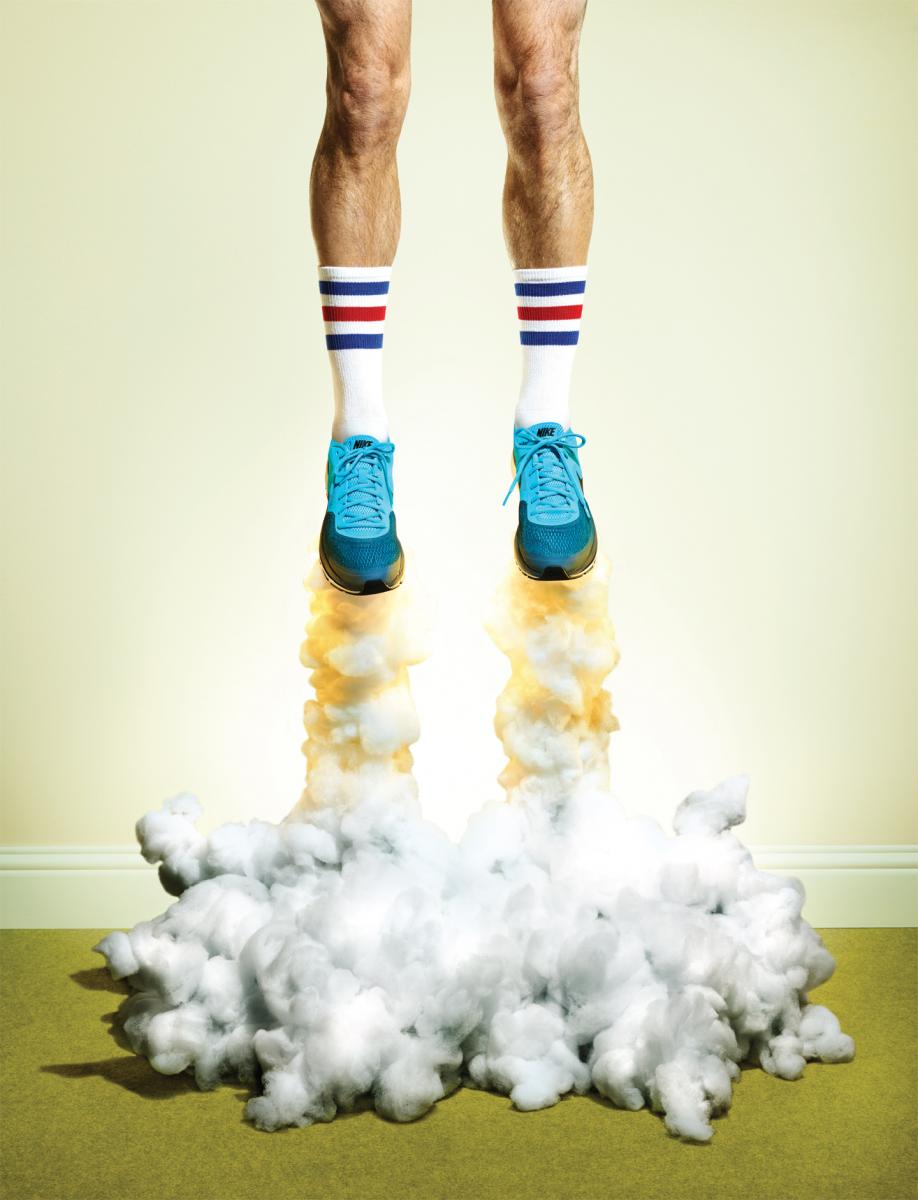The Local newsletter is your free, daily guide to life in Colorado. For locals, by locals.
About a year and a half ago, Geoff Van Dyke, 5280’s editorial director, walked into the University of Colorado’s Human Performance Lab in the hopes of whipping his 38-year-old body into shape. You can read about his journey to reboot his fitness here—and see how you can deliver on your own New Year’s resolutions, too.
__

“In endurance sports, there are two distinct forms of suffering: There is pain, and there is humiliation. These things can be discrete, but they are not necessarily mutually exclusive—and, at the moment, I am experiencing both pain and humiliation in the name of research and personal betterment. It’s a cool spring day in Denver, and I’m running. Not outside in Washington Park or along the Cherry Creek Trail, two of my occasional routes. No, I’m running at progressively increasing speeds on a treadmill in a windowless room at the Human Performance Lab at the Anschutz Health and Wellness Center, located on the University of Colorado Medical Campus. Dr. Iñigo San Millán, the director of the lab, is my taskmaster this afternoon as I undergo what the lab literature refers to as a comprehensive physiological and metabolic test.
If the phrase “physiological and metabolic test” sounds innocuous, the real thing is anything but. First, I am stripped down to my running shorts and placed on a scale (186 pounds). Then, the doctor uses calipers to pinch me—everywhere from my triceps to my waist and from my thighs to my calves—to determine my body fat percentage (20.2 percent). Next, I wrap a heart rate strap around my chest, and San Millán places a plastic-and-rubber mask over my nose and mouth and invites me onto the treadmill. The mask measures the gasses I exhale and allows San Millán to analyze my oxygen consumption and how efficiently—or inefficiently—I’m using that oxygen as I run. Every five minutes, San Millán pricks a finger on my right hand to collect a blood sample to measure lactate buildup. Then he increases the treadmill speed another half-mile an hour. I run until I can run no longer, and then the test is over.
Why would anyone subject himself to this voluntarily? Trust me, there are many times that question crosses my mind during the approximately 35-minute test. The truth is, I’d signed up for this for one simple reason. At age 38, I’d fallen into a downward spiral of disgust when it came to my general health and fitness. The demands of a full-time job, and of being a husband and a father of two young boys, had sapped any desire to be physically fit, let alone to compete in weekend fun runs and the occasional half-marathon—pursuits that are practically required when one lives within the sunny, endorphin-obsessed borders of Colorado.
Actually, that’s not totally accurate. I wanted to be fit; I loved the idea of being in shape. Before we had kids, I had been a dedicated recreational cyclist and a sporadic runner and had raced in sprint and Olympic-distance triathlons. The myriad benefits of setting goals, training, and meeting those goals were not lost on me. My problem now was I didn’t want to do the work to get fit. Don’t get me wrong, I wasn’t flirting with morbid obesity and no one would’ve thought I looked out of shape, but I was tired, lazy, lethargic—a 30-something cliché. There were moments when, after putting my six- and four-year-old sons in their rooms for “quiet time” on Sundays, I’d lie down for a nap and wonder if I’d ever feel not tired again. On weekdays, rather than going for a ride or a run after work, I was more than content to eat dinner, watch the Daily Show with Jon Stewart, and knock back a few too many beers before climbing into bed and doing it all again the next day.”








